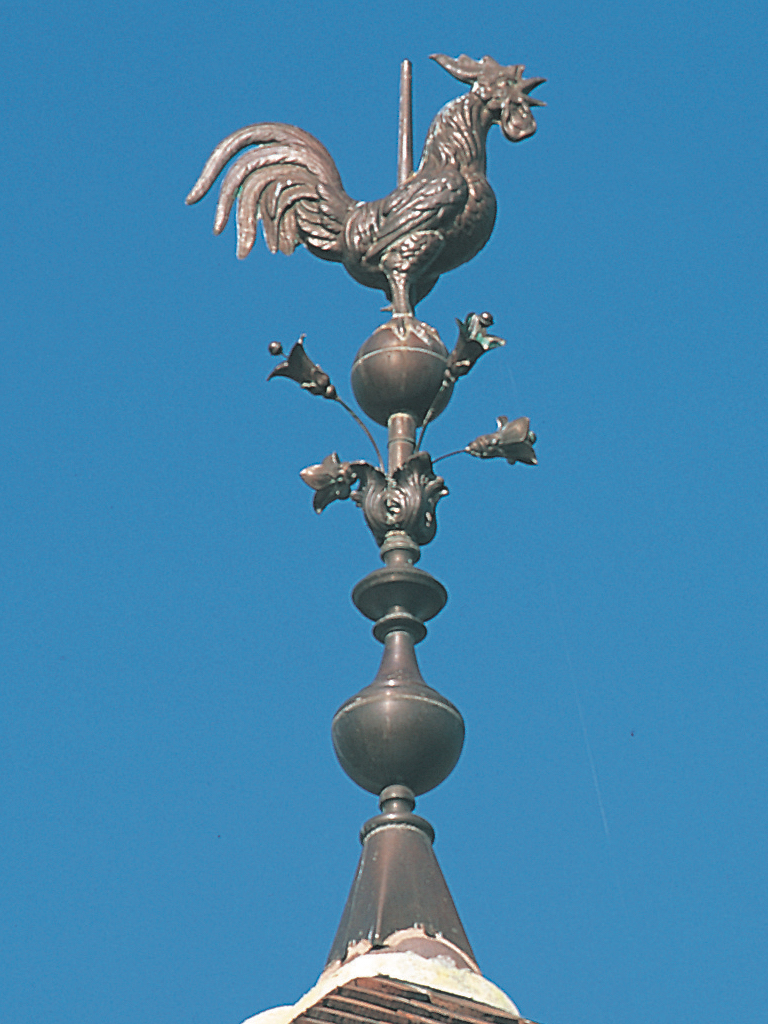Weathervanes and Compositions
Placed on a finial at the top of a roof, weathervanes indicate the wind direction.

In feudal times, weathervanes were a distinctive sign of nobility, a feudal mark that was a substitute for a banner. It was in the 18th century that their use became widespread and decorative. At the time their design and outline personified their owner’s trade or passions.
Placed on a finial at the top of a roof, weathervanes indicate the wind direction. Cut-out in shape (outline) or stamped (in volume) such as cockerels that are seen at the tops of church steeples, weathervanes can be combined with a finial and the cardinal points to create a composition. Weathervanes are part of our heritage and spin with the winds of history.